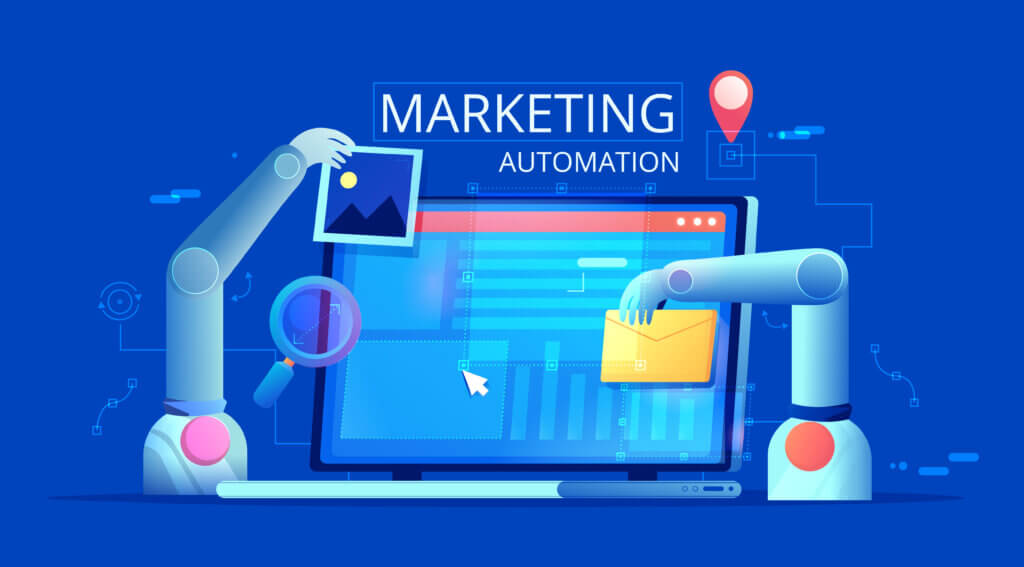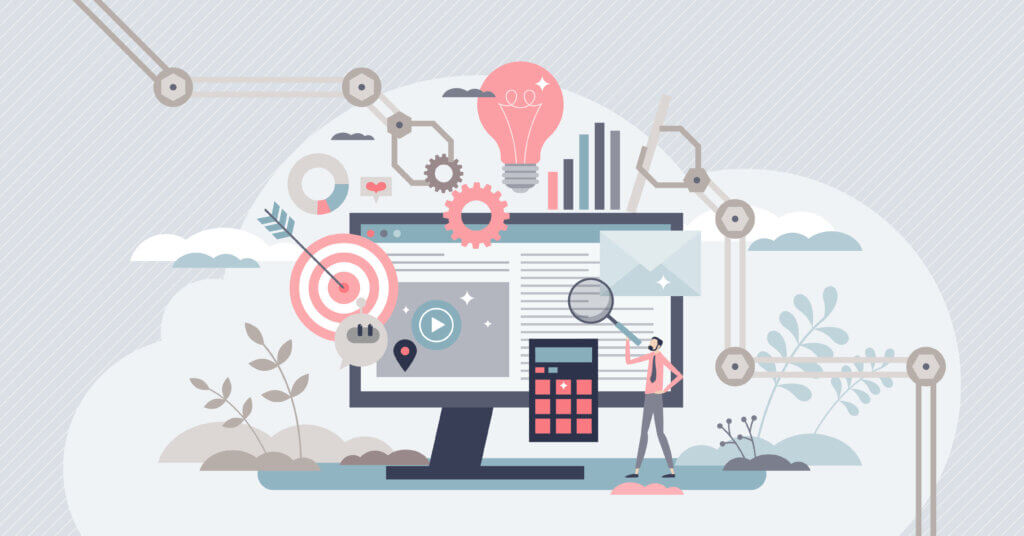Is your marketing budget feeling like a leaky bucket? You pour money in, but results seem to trickle out. Imagine targeted campaigns that convert leads, personalized messages that resonate with customers, and all of it happening automatically. Marketing automation can be the secret weapon you need to maximize your return on investment (ROI).
This guide is your secret weapon to unlock the power of marketing automation. It’ll free you from the daily grind, letting you focus on what truly matters: creating connections with your customers. Say goodbye to the marketing hustle and hello to a smarter, more profitable way to captivate your target audience. It’s time to work smarter, not harder, and watch your brand take flight.

Image source : google
Segmentation and Targeting
Segmentation and targeting are critical components of a successful marketing automation strategy. Effective segmentation allows businesses to tailor their marketing efforts to specific customer groups, ensuring that the right message reaches the right audience at the right time. Reputable companies like Attentus in Tacoma excel at using customer data to create detailed buyer personas.
The key lies in identifying those unique customer segments – whether based on demographics, behavior patterns, purchase histories, or levels of engagement. With this data-driven approach, businesses can craft messaging and offers tailored to each segment’s distinct preferences, significantly amplifying relevance and engagement.
Lead Nurturing
Lead nurturing is the process of developing relationships with potential customers at every stage of the sales funnel. This strategy helps convert prospects into customers by providing them with the information and engagement they need to make informed purchasing decisions. Implementing automated email campaigns that deliver targeted content based on user actions is a powerful way to nurture leads.
Drip campaigns are a marketer’s secret weapon – a series of expertly timed emails that keep leads engaged and build that all-important trust. But that’s not all. Lead scoring systems allow you to prioritize your follow-up efforts based on a lead’s interactions and behaviors, ensuring your sales team focuses their energy on the hottest prospects.
Multi-Channel Campaigns
Engaging customers across multiple channels ensures a consistent and cohesive brand experience, increasing the likelihood of conversion. Multi-channel campaigns integrate marketing efforts across social media, email, website, and other platforms, providing a seamless customer journey. By leveraging sap solutions by iT2 or other service providers, companies have successfully created cohesive marketing campaigns that deliver a consistent message across all touchpoints.
This approach helps businesses reinforce their brand identity and build stronger relationships with their target audience. Utilizing analytics to track performance across channels allows marketers to optimize their strategies based on real-time data. For instance, if a social media campaign is driving significant traffic but low conversions, adjustments can be made to improve the landing page experience or messaging.
Personalization
Personalization is at the heart of effective marketing automation. Personalized marketing can significantly boost engagement and conversion rates by making customers feel valued and understood. By utilizing customer data to personalize email content, product recommendations, and offers, businesses can create more meaningful interactions.
Dynamic content in emails and on websites can tailor the user experience for each visitor based on their preferences and behavior. Behavioral data, such as past purchases or browsing history, can trigger personalized messages, increasing the relevance and impact of marketing efforts. For example, an email reminding a customer about an abandoned cart with a personalized discount can prompt a purchase.

Image source : google
Analytics and Optimization
Continuous analysis and optimization are crucial for improving the effectiveness of marketing efforts and maximizing ROI. Setting clear key performance indicators (KPIs) and tracking performance metrics using marketing automation platforms provides valuable insights into what works and what doesn’t.
Analyzing data helps identify trends, strengths, and areas for improvement. A/B testing different strategies and tactics can determine the most effective approaches, enabling continuous refinement and optimization of campaigns. For example, testing different subject lines in email campaigns can reveal which ones drive higher open rates, allowing for better future performance.
Customer Retention
Retaining existing customers is often more cost-effective than acquiring new ones, and loyal customers are more likely to make repeat purchases and refer others. Marketing automation can play a significant role in customer retention by maintaining regular contact through personalized emails and offers. Automated workflows can deliver timely communications, such as thank-you notes after a purchase or special offers on a customer’s birthday.
Implementing loyalty programs and exclusive offers for repeat customers fosters a sense of appreciation and loyalty. Collecting and acting on customer feedback ensures continuous improvement in the customer experience, leading to higher satisfaction and retention. For example, a post-purchase survey can provide insights into customer satisfaction and areas for improvement.
Predictive Analytics
Predictive analytics is an advanced strategy that uses data, statistical algorithms, and machine learning techniques to identify the likelihood of future outcomes based on historical data. By integrating predictive analytics into marketing automation, businesses can gain deeper insights into customer behavior and preferences. This allows for more accurate forecasting and better decision-making.
For example, predictive analytics can help identify which leads are most likely to convert, enabling marketers to focus their efforts on high-potential prospects. Additionally, it can predict future trends, such as seasonal demand fluctuations or emerging customer preferences, allowing businesses to proactively adjust their strategies. This data-driven approach not only enhances the effectiveness of marketing campaigns but also maximizes high ROI by ensuring resources are allocated efficiently and strategically.
Key Takeaways :
- Effective segmentation and targeting allow businesses to tailor their marketing efforts to specific customer groups, ensuring that the right message reaches the right audience at the right time, significantly increasing engagement and relevance.
- Implementing multi-channel campaigns provides a seamless and consistent brand experience across platforms, enhancing the customer journey and increasing the likelihood of conversion.
- Continuous analysis and optimization, through setting clear KPIs and utilizing data-driven insights, help refine marketing strategies, leading to improved performance and maximized ROI.
Conclusion
Marketing automation is a game-changer for businesses seeking to elevate their marketing game, boost productivity, and maximize their return on investment. By zeroing in on segmentation, nurturing leads through their journey, orchestrating seamless multi-channel campaigns, and delivering personalized experiences, companies can craft marketing strategies that truly resonate.


